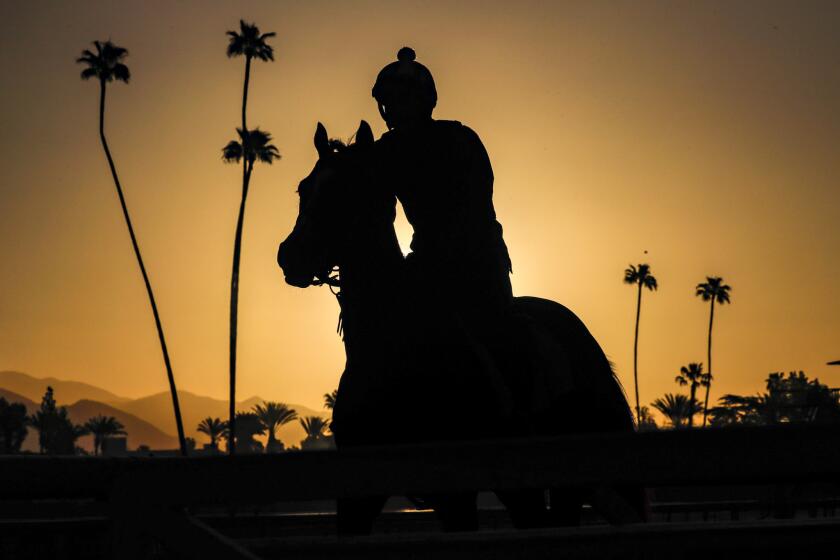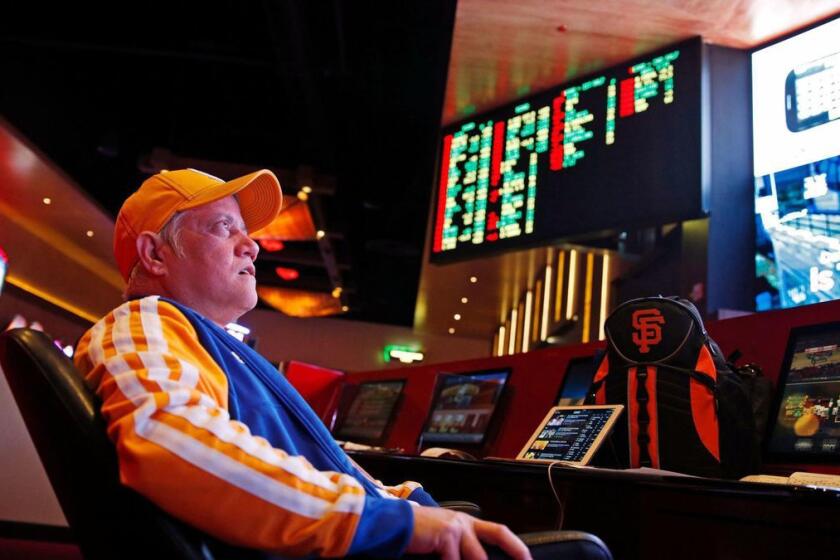Use of whips in horse races among topics CHRB discussed
- Share via
A slimmed-down version of the California Horse Racing Board started the new year in its new winter home of Sacramento much like it ended the previous year with uncertainty as to how it would legislate the use of the riding crop, or whip.
Only four members of the board were present Wednesday, the minimum allowed to have a meeting. Member Alex Solis was unable to attend and the spots formerly held by Madeline Auerbach and Fred Maas have not been filled by Gov. Gavin Newsom.
Most of the interest in the 12-item public agenda was over the use of the riding crop. The board had many proposals, including the elimination of the crop except for safety. The current proposal has use of the whip restricted to an underhand position no higher than the shoulder. In addition, a jockey should show the horse the crop or tap it on the shoulder with the crop in the down position while either holding on to the reins or touching the neck of the horse.
So far, Santa Anita has had five deaths since Dec. 26, the scheduled start of the season.
Former jockey Ramon Dominguez made a presentation about his new crop, which is made of a foam-like substance and makes a loud popping noise that is said to get a horse’s attention. That crop has been used successfully at other tracks such as Keeneland.
Part of the CHRB proposal would have jockeys check out crops, much like library books, giving control of the devices to the track. Jockey Guild representatives made the argument that riders come in different shapes and sizes and so should the crops. The board seemed to agree to eliminate that part of the proposal before tabling it to the Feb. 20 meeting. It is seeking more input from the Medication and Safety Committee, which meets Feb. 12.
Wednesday’s meeting was held in a hearing room in the Department of Consumer Affairs, part of the agency that oversees the CHRB. Previously, early-year meetings were held at Santa Anita, but the track no longer wanted to host the meetings out of a concern for safety given the number of animal-rights activists that appear at the meetings. Normally the meetings were held on Thursdays, which is usually a race day at Santa Anita.
Momentum is building in California to legalize wagering on athletic contests, setting off intense competition among rival gambling interests.
Dr. Rick Arthur, equine medical director of the CHRB, reported that in the first half of the 2019-2020 fiscal year, which starts July 1, there were 62 horse fatalities in the state. The figure includes nonracing accidents and sickness. During the previous fiscal year there were 78.
Animal rights activists had their turn at the lectern in the 169-minute meeting and were calling for a future agenda item that would abolish horse racing at state-owned facilities, which would end the fair circuit and possibly Del Mar.
More to Read
Go beyond the scoreboard
Get the latest on L.A.'s teams in the daily Sports Report newsletter.
You may occasionally receive promotional content from the Los Angeles Times.












